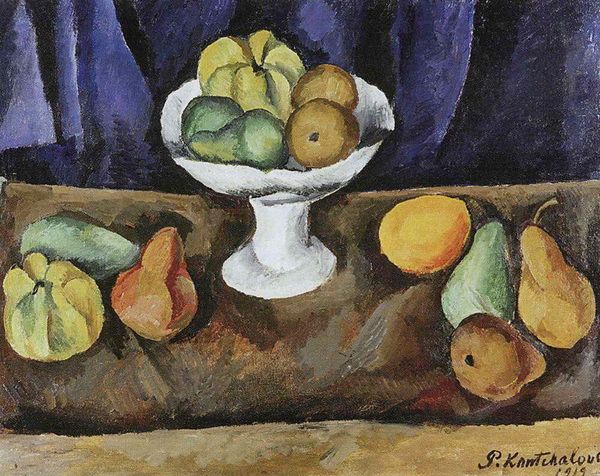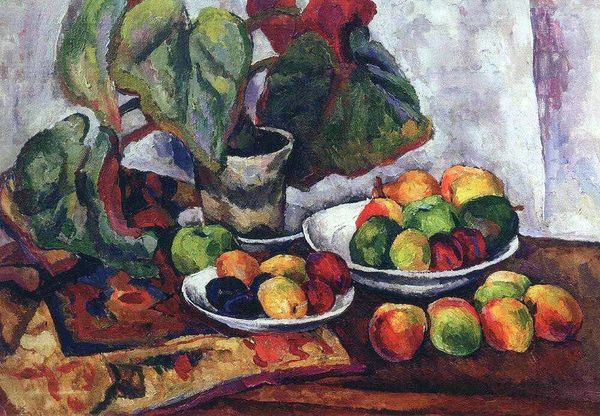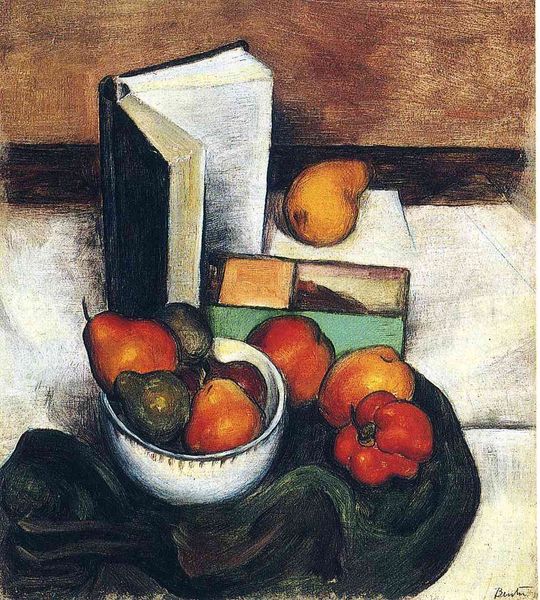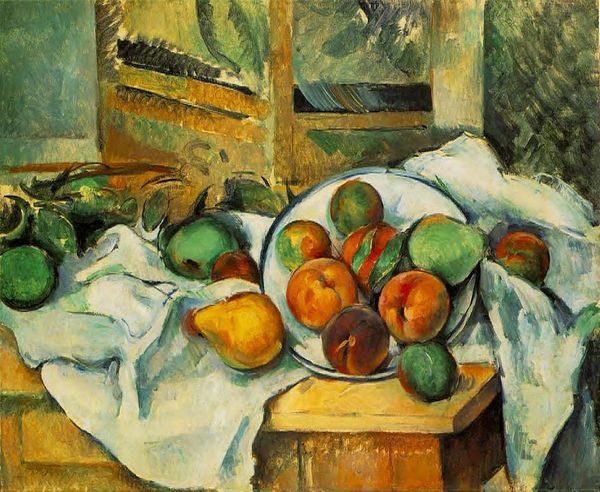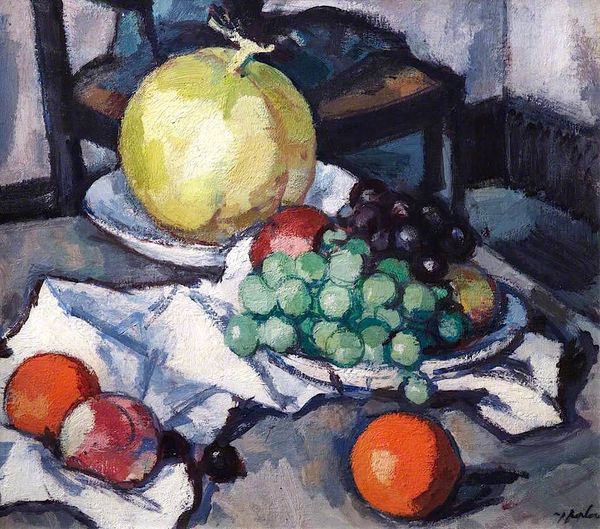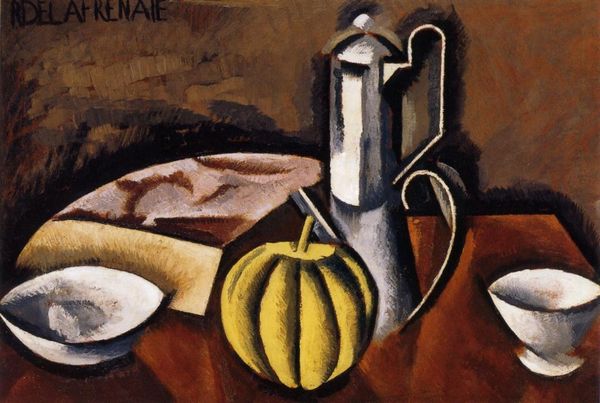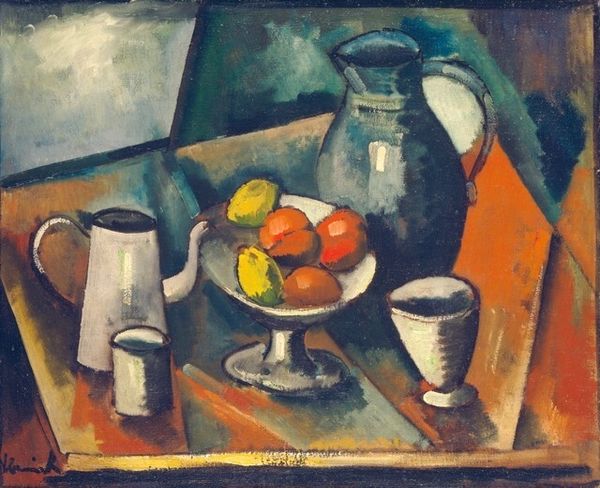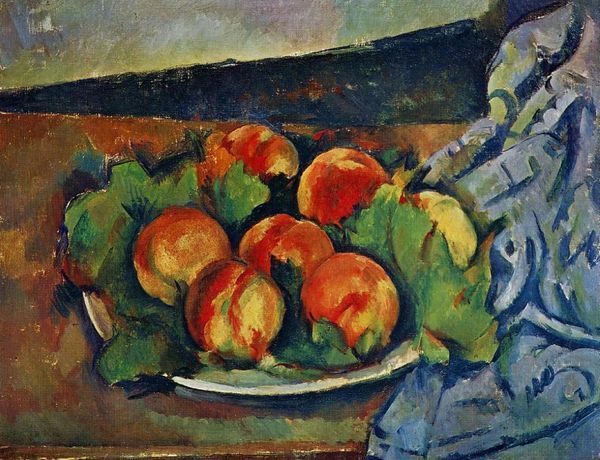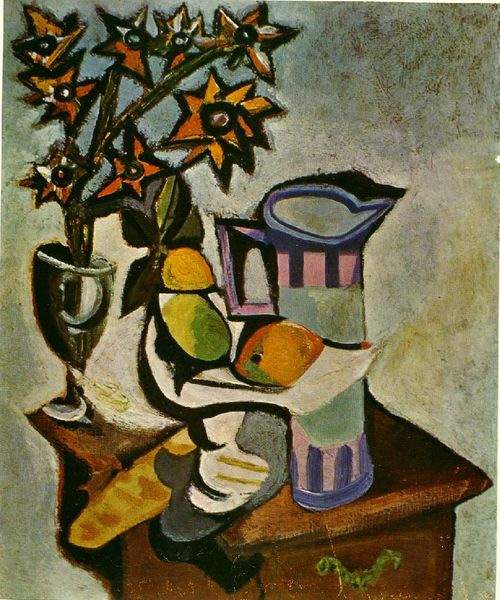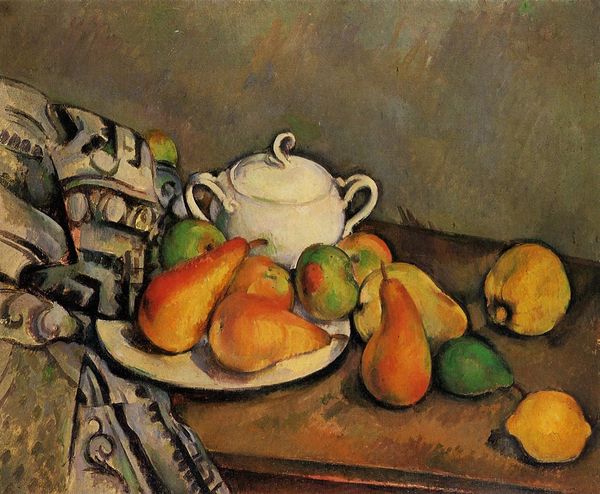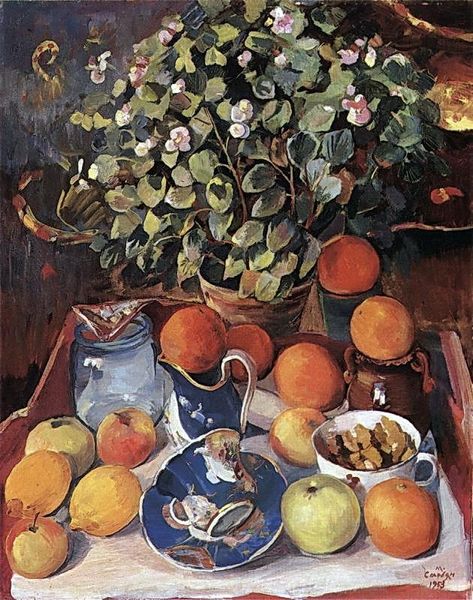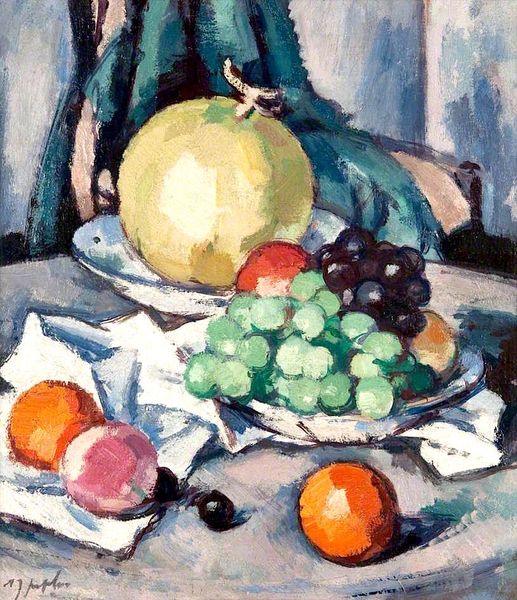
painting, oil-paint
#
cubism
#
painting
#
oil-paint
#
oil painting
#
fruit
#
geometric
Dimensions: 91 x 72.5 cm
Copyright: Public domain US
Editor: Here we have Pablo Picasso’s "Fruit in a Vase," painted in 1909, using oil on canvas. It feels almost… austere, despite being a still life. How do you interpret this work? Curator: It is intriguing, isn’t it? Note how Picasso breaks down the conventional understanding of still life. Look closely at the fragmented forms of the fruit, almost deconstructed. Consider the weight these images carry beyond their mere representation of fruit. Think about abundance, nature, the act of consumption, perhaps even mortality—all distilled into geometric symbols. Do you see any visual echoes of earlier artistic traditions in the way Picasso arranges these elements? Editor: I see the influence of Cezanne maybe, especially with the muted tones and the everyday subject matter. Curator: Precisely. But Picasso pushes it further. It’s like he’s peeling back layers of perception, asking us to reconsider how we see and understand. He seems to use Cubism to dissect the idea of a “still life,” exposing its underlying symbolic structure. It makes one consider the act of observing; we don’t see what’s truly there but a projection. Editor: So, it's not just about seeing the fruit, but understanding the ideas *behind* the fruit. That’s really fascinating. I’ll never look at fruit the same way! Curator: And perhaps it also suggests the possibility of multiple viewpoints, layered into one image. It challenges us to accept a more fluid, less certain, understanding of reality, just as symbols do through history.
Comments
No comments
Be the first to comment and join the conversation on the ultimate creative platform.
